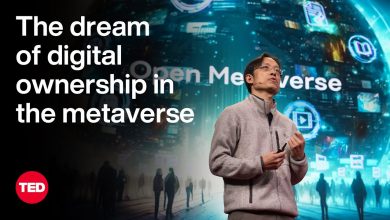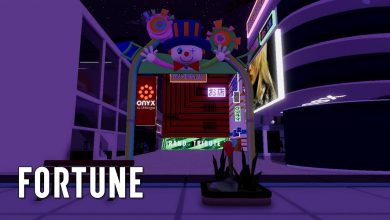 The internet has come a long way since its inception. From the early days of static web pages to the dynamic and interactive websites we see today, the evolution of the internet has been remarkable.
The internet has come a long way since its inception. From the early days of static web pages to the dynamic and interactive websites we see today, the evolution of the internet has been remarkable.
However, the journey doesn’t end here. The next phase of the internet, known as Web 3.0, is set to revolutionize the way we interact with the online world.
Web 3.0 is the next generation of the internet that aims to provide a more intelligent, connected, and personalized online experience.
It is characterized by the ability to understand and interpret data, enabling machines to communicate with each other and make sense of the vast amount of information available on the web.
The Spatial Web: A New Dimension of Interaction
The Spatial Web takes the concept of Web 3.0 a step further by introducing a spatial dimension to the online experience. Spatial computing technologies enable the mapping of digital content onto physical spaces, creating interactive experiences.
The Spatial Web is a term that refers to the merging of physical and digital worlds, creating immersive experiences that overlay digital information onto our physical environment. This concept is powered by a combination of technologies that enable spatial computing, augmented reality (AR), virtual reality (VR), Internet of Things (IoT), and more.
The Spatial Web transforms how we interact with information and the world around us. It allows for the seamless integration of digital content into our physical space, enhancing our perception and understanding of reality. By leveraging technologies like AR and VR, the Spatial Web enables users to visualize data, interact with virtual objects, and access information in real-time.
It combines AR, VR and mixed reality MR technologies to create immersive and interactive environments that seamlessly blend the physical and digital worlds. In this article Dr Mark van Rijmenam, CSP, a strategic futurist keynote speaker, describes how:
“Spatial computing is a transformative technology that seamlessly intertwines our physical reality with the digital sphere, forging a new and profound connection. This cutting-edge approach is founded on the crucial concept of spatial awareness, granting computers the capacity to interact with the world in a manner more akin to human intuition. With its ability to bridge the physical and digital worlds, spatial computing presents many opportunities for businesses, industries, and individuals.”
The emergence of Web 3.0 and the Spatial Web brings forth a multitude of benefits and opportunities:
- Enhanced User Experience: Users can enjoy more personalized and context-aware online experiences tailored to their preferences and needs.
- Improved Accessibility: The Spatial Web enables people with disabilities to interact with digital content in new and meaningful ways.
- Revolutionizing Industries: Various industries, such as healthcare, education, and entertainment, can leverage the Spatial Web to transform their operations and deliver innovative services.
- Collaborative Workspaces: Virtual environments created by the Spatial Web allow remote teams to collaborate in real-time, breaking down geographical barriers.
Challenges and Considerations
While the potential of Web 3.0 and the Spatial Web is immense, there are also challenges and considerations to address:
- Privacy and Security: With increased connectivity and data sharing, ensuring privacy and security becomes crucial.
- Infrastructure Requirements: The widespread adoption of the Spatial Web requires robust infrastructure, including high-speed internet and advanced hardware.
- Ethical Implications: As the boundaries between the physical and digital worlds blur, ethical considerations regarding data usage and virtual experiences need to be addressed.
The Spatial Web is poised to revolutionize how we interact with technology and the world. As advancements in AR, VR, and IoT continue to evolve, the Spatial Web will become more integrated into our daily lives. Industries such as healthcare, education, retail, and entertainment are already exploring the potential of the Spatial Web to enhance user experiences and drive innovation.
With the rise of 5G networks and the increasing adoption of wearable devices, the Spatial Web will offer new opportunities for communication, collaboration, and entertainment. Developers and businesses are investing in Spatial Web technologies to create interactive applications, immersive experiences, and innovative solutions that leverage the power of spatial computing.
As the Spatial Web continues to evolve, it will redefine how we interact with digital content, connect with others, and experience the world around us. By embracing the possibilities of spatial computing and immersive technologies, we are entering a new era of interconnected digital experiences that blur the lines between the physical and digital realms.
Web 3.0 and the Spatial Web represent the future of the internet, offering exciting possibilities for immersive and interactive experiences. As technology continues to advance, it is essential to embrace these new paradigms and explore their potential to shape the way we interact with the online world.




